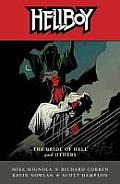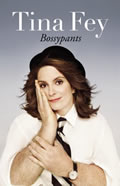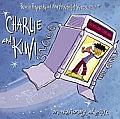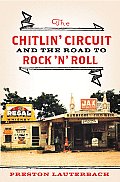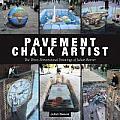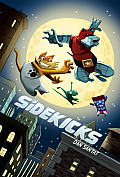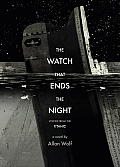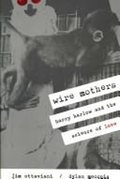Link to this review in the form of a comic strip by geneambaum tagged paranormal • graphic novel
Link to this review by dawnrutherford tagged biography • nonfiction • humor
Comedian, writer, and producer Tina Fey writes about the incredible amount of hard work she has put into becoming successful while offering solid, profanity-filled career advice for women.
Why I picked it up: I’ve been a fan of Tina Fey ever since she started co-anchoring Weekend Update on Saturday Night Live back in 2000. I appreciate her no bullshit attitude, non-Hollywood looks (she has a visible scar and wears glasses), and the way she helped SNL become a female-friendly show that I enjoyed watching. And her Sara Palin impersonation is bad-ass.
Why I finished it: She exposes sexism in television production and sketch comedy in a way that is funny and feels dead on. She talks about her struggles balancing career and motherhood as a woman turning forty, an age when, historically, her options for both diminish sharply. It was awesome and comforting to hear someone who clearly suffers anxiety over these things realize that her best is really good enough. (Though I am amazed anyone can work this hard. I feel like a lazy bum by comparison.)
I’d give it to: Gene, who would appreciate hearing about the process of writing 30 Rock and would also be in a rapture over the grody poetry of her language when she talks about b-holes, gooballs, shit nuggets, and museum quality stools.
Link to this review by billba tagged picture book
Picture book in which Charlie and his stuffed kiwi go back in time to figure out why kiwis exist. (They’re kind of ridiculous, after all.)
Why I picked it up: Big fan of evolution. It made me the man I am today.
Why I finished it: Charlie first uses his time machine to visit his great-great-and-so-forth-grandfather, who is obviously Charles Darwin. Charlie is clearly black, and his ancestor is clearly white. And nothing is said or made of this. And that is kind of amazing. Even though our President is half white, one hardly ever sees kids books with black characters dealing with their white ancestors. That these two ended up face to face kind of rocked. Oh, and now I know why kiwis exist.
I’d give it to: Rosie, my daughter, who is obviously not 100% black, loves animals, and needs a firm grounding in evolution in our increasingly anti-science country.
Link to this review by flemtastic tagged history • nonfiction
Preston Lauterbach sat down to interview an old musician about a different topic, but the old man kept bringing up stories about the good old days on the circuit. After checking into a few of his stories, Lauterbach began the exhaustive research that permeates this book.
In the 1930s numbers-runner Denver Ferguson opened a club in Indianapolis. He started promoting acts that traveled around the South, playing rinky-dink, claustrophobic clubs — the Chitlin’ Circuit. These tours launched the careers of famous bandleaders, jazz performers, and the earliest rock and roll stars. The racketeering, police bribery, numbers games, bootlegging and violence was a side note to the music. In the end, the Circuit fell apart, but not before Rock and Roll had taken off and crossed over to the white charts, integrating the segregated Billboard charts and all of music.
Why I picked it up: It seemed that every which way I turned, I saw or heard someone mentioning this book. Finally, when it happened again, I thought to myself that I had better get it or risk irritating the universe.
Why I finished it: It read smoothly, but had lots of footnotes that showed how much research went into it. Little Richard’s original lyrics to “Tutti Frutti” were a paean to gay sex: “Tutti Frutti, good booty / If it don’t fit, don’t force it / You can grease it, make it easy.” B.B. King was originally a radio personality who played clubs on the weekends and late nights to satisfy his musical urgings until he finally joined the Chitlin’ Circuit and quit his day job.
I’d give it to: Ben, who knows the music, but probably not the gangsters who promoted the Circuit, often roughly and with blunt, non-musical instruments.
Link to this review by geneambaum tagged graphic novel • literary
Frank accidentally destroys his house with a croquet set. He unknowingly goes into debt in having a new house built and is forced to work a miserable job to pay it off. He escapes to a carnival with the strange, duck-billed creature who (unknown to him) is responsible for his misfortune.
Why I picked it up: The book is beautifully designed (by Woodring himself): an image of Frank in the forest on the front cover (under the dust jacket), in blue; the red endpapers; the heavy, off-white paper.
Why I finished it: It’s wordless and flows from scene to scene with dream logic, so it’s a quick read. Woodring’s inking is so fabulous that I’ve already reread it, and opened it to specific pages to stare at the varying weights he gives his lines. I particularly liked the textures of the wood walls in the background of the factory where Frank works and how they make the machines stand out from the background.
I’d give it to: The old guy popping rivets into van consoles at the plastics factory where I worked for three short days the summer after high school. He’d been there for twenty years, so he had the easy job (unlike me, the new guy, whose fingers were a few inches from high-speed saw blades all day). I thought of him as soon as I saw Frank looking miserable, dumping slime and maggots into a grinder.
Link to this review by sharonlevin tagged coffee table book • art
Julian Beever’s sidewalk chalk drawings make my jaw drop. His use of perspective makes them look 3D. This is one of his favorites (the girl is his daughter).
Why I picked it up: I was wandering around a used bookstore and saw the cover with a picture of a man (Beever) sitting on top of Big Ben while another man dangles from its hands.
Why I finished it: Because even knowing that almost all of the artwork is drawn on flat surfaces, I could not get my brain to believe it. I stared and stared at Making Mr. Snowman, in which a little girl is about to put a carrot on a snowman, and all I can see is the illusion. It’s truly magical.
I’d give it to: My husband. It’s a perfect birthday present because he’s an engineer who enjoys art and photography. Beever’s finished art and learning the story and technique behind each piece will fascinate him. And Dick Van Dyke. No, really — Pavement Chalk Artist reminds me of Bert in Mary Poppins and Mr. Van Dyke seems like he would appreciate all of the drawings’ talent and whimsy.
Link to this review by geneambaum tagged superhero • graphic novel
After the aging Captain Amazing loses a fight because of his peanut allergy, he needs two things: rest and a new sidekick. His pets Fluffy (a hamster), Shifty (a chameleon), and Roscoe (a dog) decide to compete at the auditions.
Despite a lack of powers, Fluffy and Shifty take to the streets to get a little experience. After almost being eaten by a group of cats, they convince the mysterious hero known as The Claw to teach them what he knows about crime fighting.
Why I picked it up: The metal dog on the cover made me think of Colossus, and the other animals there look like they’re having a good time.
Why I finished it: I loved this bit of dialogue, from when Fluffy (wearing a costume that looks like Captain America’s) and Shifty are about to be eaten by cats.
Cat: Are there any last requests before you become a late-night snack?
Shifty: I-I have to pee.
Cat (disgusted): Ugh! I guess we’ll start with the blue one first.
I’d give it to: David, who used to watch The Tick with me on Saturday mornings, because he’d love Narwhal, the schlubbiest hero in line at the sidekick auditions. (It’s always a bad sign when the hero has to put his name on his costume.)
Link to this review by flemtastic tagged historical fiction
Two dozen passengers, crew, and socialites offer their blank verse, first-person perspectives on the Titanic, covering periods from its creation to sinking. The “Unsinkable Molly Brown,” John Jacob Astor, and Captain E.J. Smith take a turn. So do a Lebanese refugee, a card-sharp, the spark who works the Marconi radio, a man in hiding who is trying to get his kids away from his wife, and a coal stoker with stolen identity papers who took a drunk’s berth.
Why I picked it up: Nominated for my book committee for the American Library Association.
Why I finished it: I had no idea that there was so much going on on the ship besides the sinking! And it is all based on exhaustive research done by Wolf, who notes carefully which parts are entirely true and which are fiction. Much of the book is dedicated to the sinking, but there is also quite a bit about the building, testing and provisioning.
I’d give it to: My friend Todd, a Titanic buff, would like that this book tells the stories of regular passengers and crew.
Link to this review by sarahhunt tagged graphic novel • science
Not so long ago, doctors recommended that babies be protected from germs and infection by avoiding hugs, kisses, and close contact. Harry Harlow was the first psychology researcher to attempt to prove that love was important to infant development, despite being scorned by other scientists.
Why I picked it up: I loved T-Minus and wanted to read more of Ottaviani’s science comics.
Why I finished it: The experiments Harlow did with infant monkeys were upsetting. He gave them either a substitute mother made of wire, another covered with cloth, or no mother at all. But they had a huge, positive influence in how human infants were treated.
I’d give it to: Tom, who would admire Harlow’s struggle against the odds to do vital research. He faced anti-Semitism, had a stutter, and lacked lab space and affordable monkeys.
